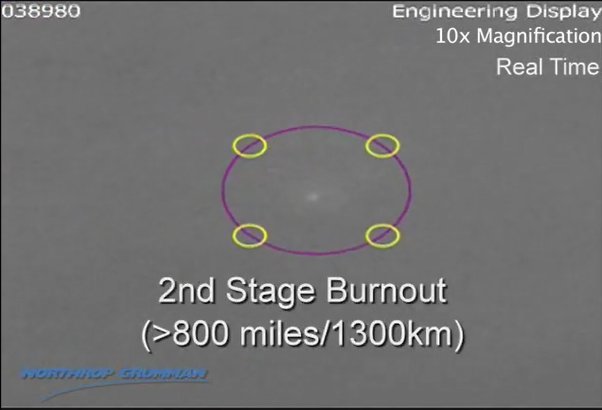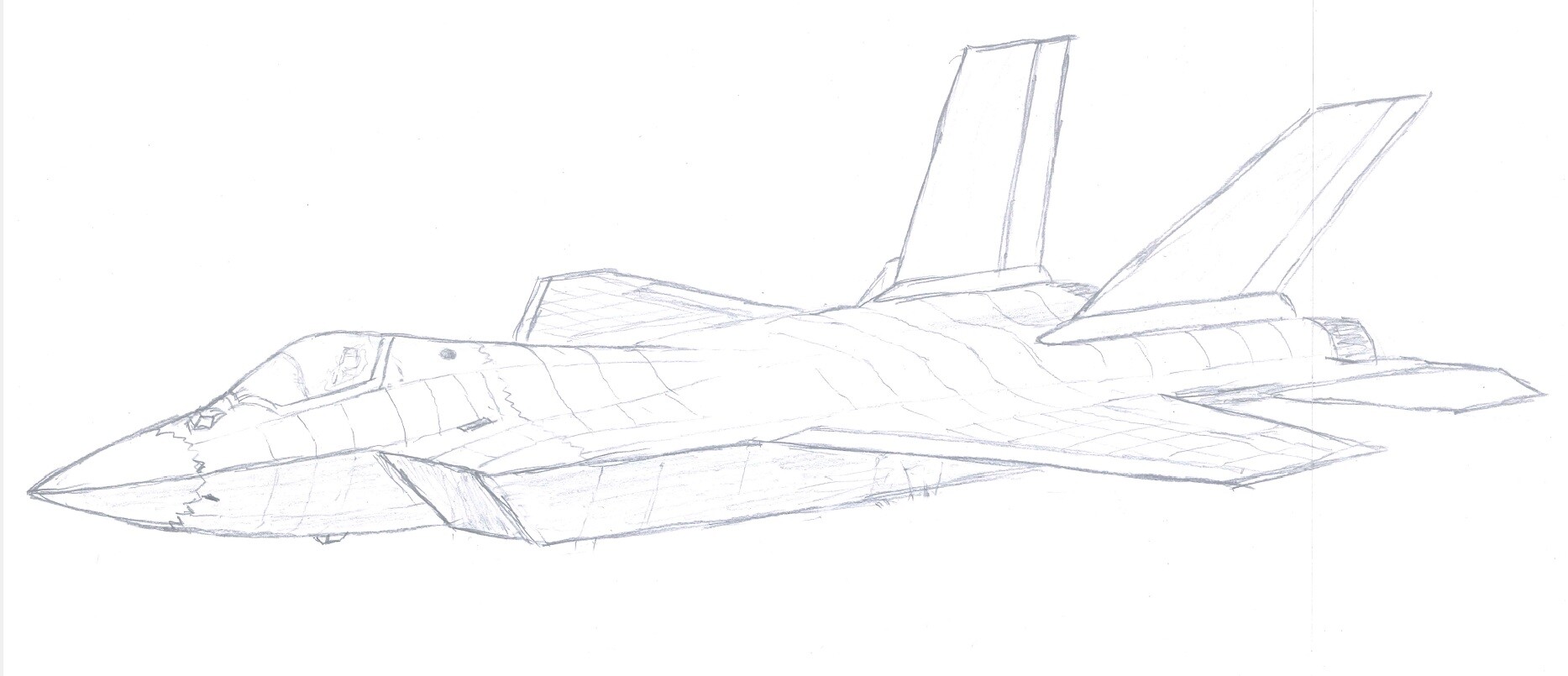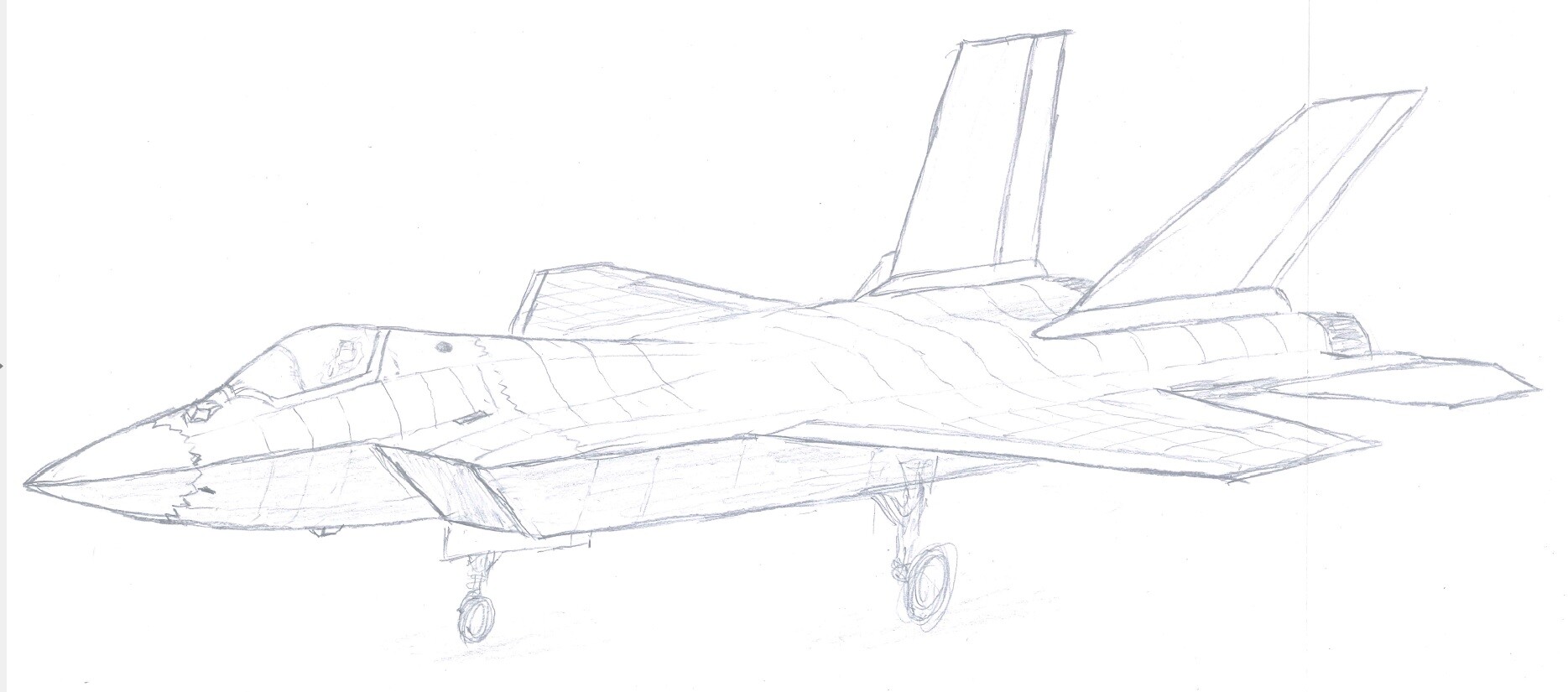No, they're actually going to fly her out of the hangar.This opens up the possibility of the plane to accidentally take off after roll out.
Latest Thread
You are using an out of date browser. It may not display this or other websites correctly.
You should upgrade or use an alternative browser.
You should upgrade or use an alternative browser.
As opposed to coming back in.No, they're actually going to fly her out of the hangar.
I don't have that kind of wild imagination like you suggest.
I asked Midjourney to imagine the TF-X in the air using style transfer from the images we have of its front. These were the results. My trial ran out. Maybe someone else can take my place?
Edit: It's a little unfortunate that, in my excitement to share these images with this community, I forgot to explicitly watermark these images as having been generated by AI and not actually pictures of the TF-X. I hope, but wouldn't be surprised if, those text-to-speech defence youtube channels try to pass these off in videos with such lovely titles like "FINALLY! TF-X FLIES!!! BETTER THAN F-22 XXX!!!". Better the source be traceable here than elsewhere, I suppose. I'd urge others who attempt this technique to watermark their pictures, unlike me.


Edit: It's a little unfortunate that, in my excitement to share these images with this community, I forgot to explicitly watermark these images as having been generated by AI and not actually pictures of the TF-X. I hope, but wouldn't be surprised if, those text-to-speech defence youtube channels try to pass these off in videos with such lovely titles like "FINALLY! TF-X FLIES!!! BETTER THAN F-22 XXX!!!". Better the source be traceable here than elsewhere, I suppose. I'd urge others who attempt this technique to watermark their pictures, unlike me.
Last edited:
Thanks for the infographicsHere's another cursory analysis of the current state of TF-X's avionics and computer systems: this time the National Mission Computer, presented by Mustafa Varank back in November. Keep in mind, I am a lowly software engineer, and not a military embedded systems engineer so everything is probably wrong. However, I can say that the NMC appears to be a modern design broadly in line with the US DoD's Modular Open Systems Approach (MOSA). Everything is solid-state (no moving parts), unlike the current F-35 ICP, which uses the notoriously hot running IBM PowerPC architecture thus requiring fans. The NMC is likely using a multi-core variant of ÇAKIL as its CPU, which implements the efficient and open-source RISC-V microarchitecture. Its GPU is unknown but the PCI-E slot and AMD Radeon E8860 support listed for Bilgem's Real Time Operating System (GİS) suggests that they are probably using a COTS Radeon E8860 Embedded GPU for the time being.
Presented were two seemingly different components. However, I think the bare board camera-left is a test bench configuration of the complete system camera-right.
Annotated complete NMC in enclosure:
View attachment 52543
Annotated NMC test bench: View attachment 52545
Feedback/corrections from any computer engineers is very much welcome.
@moz68k also does it seem good?Thanks for the infographics
I'm not an embedded and/or real-time systems engineer, but I know that in so called "hard" real-time systems, each task—be that graphics, sensor fusion, or IFF—must be prioritized and scheduled in terms of importance and frequency. For instance, an absolute deadline of max 1ms for all flight control systems and an update frequency of 500 times per second (every 2ms) could be designated. If deadlines are missed, a reasonable fallback or fail-safe must be designed. This goes all the back to the the Apollo Guidance Computer days (that beauty had ≈4kB bytes of memory, and ≈76kB of program storage!).
Since all (sub)systems have strict deadlines, software can be tailor made and tested for specific hardware and a lot of the inefficiencies of general purpose computer software and hardware can be eliminated. The F-35's integrated core processor (ICP) is claimed to have >2900 DMIPS (millions of useful instructions per second) of processing power. An Intel quad-core i7 4770 from 2013 can push 127273 DMIPS. So, as TheInsider said, aerospace computers don't need to be *that* cutting edge. F-35 was just recently tested with an upgraded ICP and radar, no one knows its capabilities, but if we can even match the previous ICP (2005 tech), I'd call that a success.
You can't really use consumer level hardware (COTS) as-is with the avionics architecture we are striving for (ARINC, VITA, MIL standards compliant; a.k.a LM, Boeing, Airbus level) without significant modifications. For instance, those VPX slots are broadly similar to PCIe, but purpose-built to fit aerospace requirements. For the testing board Bilgem might actually be using that consumer AMD GPU I mentioned, but it is almost certainly a stop-gap until a home-grown display processor is built/tested. If we are pushed to the point of exclusively needing COTS, we could probably pull it off. But we shouldn't aim or be put in a position where that is the only solution.
Since all (sub)systems have strict deadlines, software can be tailor made and tested for specific hardware and a lot of the inefficiencies of general purpose computer software and hardware can be eliminated. The F-35's integrated core processor (ICP) is claimed to have >2900 DMIPS (millions of useful instructions per second) of processing power. An Intel quad-core i7 4770 from 2013 can push 127273 DMIPS. So, as TheInsider said, aerospace computers don't need to be *that* cutting edge. F-35 was just recently tested with an upgraded ICP and radar, no one knows its capabilities, but if we can even match the previous ICP (2005 tech), I'd call that a success.
You can't really use consumer level hardware (COTS) as-is with the avionics architecture we are striving for (ARINC, VITA, MIL standards compliant; a.k.a LM, Boeing, Airbus level) without significant modifications. For instance, those VPX slots are broadly similar to PCIe, but purpose-built to fit aerospace requirements. For the testing board Bilgem might actually be using that consumer AMD GPU I mentioned, but it is almost certainly a stop-gap until a home-grown display processor is built/tested. If we are pushed to the point of exclusively needing COTS, we could probably pull it off. But we shouldn't aim or be put in a position where that is the only solution.
Last edited:
Fyi F-35 ICP (current) uses a COTS (probably Intel) chip from early 2000sI'm not an embedded and/or real-time systems engineer, but I know that in so called "hard" real-time systems, each task—be that graphics, sensor fusion, or IFF—must be prioritized and scheduled in terms of importance and frequency. For instance, an absolute deadline of max 1ms for all flight control systems and an update frequency of 500 times per second (every 2ms) could be designated. If deadlines are missed, a reasonable fallback or fail-safe must be designed. This goes all the back to the the Apollo Guidance Computer days (that beauty had ≈4kB bytes of memory, and ≈76kB of program storage!).
Since all (sub)systems have strict deadlines, software can be tailor made and tested for specific hardware and a lot of the inefficiencies of general purpose computer software and hardware can be eliminated. The F-35's integrated core processor (ICP) is claimed to have >2900 DMIPS (millions of useful instructions per second) of processing power. An Intel quad-core i7 4770 from 2013 can push 127273 DMIPS. So, as TheInsider said, aerospace computers don't need to be *that* cutting edge. F-35 was just recently tested with an upgraded ICP and radar, no one knows its capabilities, but if we can even match the previous ICP (2005 tech), I'd call that a success.
You can't really use consumer level hardware (COTS) with the avionics architecture we are striving for (ARINC, VITA, MIL standards compliant; a.k.a LM, Boeing, Airbus level) without significant modifications. For instance, those VPX slots are broadly similar to PCIe, but purpose-built to fit aerospace requirements. For the testing board Bilgem might actually be using that consumer AMD GPU I mentioned, but it is almost certainly a stop-gap until a home-grown display processor is built/tested. If we are pushed to the point of needing COTS, we could probably pull it off. But we shouldn't aim or be put in a position where that is the only solution.
Might make more sense for UCAV where you have no pilot and need to process more data before transmitting. Could be used to run a more complex AI model as well.
In robotics you have layered architectures where longer more complex planning tasks are run in parallel while system is continuing previous plan and reacting to environment, making moment to moment decisions.
In robotics you have layered architectures where longer more complex planning tasks are run in parallel while system is continuing previous plan and reacting to environment, making moment to moment decisions.
No it's definitely a PowerPC from IBM or Motorola, we don't know its specifics, though.Fyi F-35 ICP (current) uses a COTS (probably Intel) chip from early 2000s
Shit, my friend at LM kekw'd me thenNo it's definitely a PowerPC from IBM or Motorola, we don't know its specifics, though.
I got Midjourney to remix this image of the TF-X's front in context (i.e., I shopped the colorized version of it into the sky) since previous results kept it unpainted. It created lots of results that looked like a cross between F-35 (front), F-22 (mid) and Su-57 (rear) which gave me a decent starting point to sculpt the TF-X using the liquify and clone brush tool. I'm not a digital artist, I don't know how shading works but if you squint I think this is a good enough artist's concept on what the real TF-X might look like in the air. I watermarked it this time by sprinkling "FAKE" everywhere.

Here's the freak Midjourney originally created:

prompt was "/imagine <imgur-link-to-image> stealth jet fighter, DVD screengrab --ar 3:2" in remix mode.
Here's the freak Midjourney originally created:
prompt was "/imagine <imgur-link-to-image> stealth jet fighter, DVD screengrab --ar 3:2" in remix mode.
Last edited:
Really , not optimized IRST ?DAS is not optimized for IRST tho, it is 360° short-mid range system for MWS.
LWIR is better than MWIR for IRST
Not many IRST can actually do this ...1300km pheww
its very good it can do this
Not everyone will find it pleasant once the DAS gets its upgrade
1300km of uhm...Really , not optimized IRST ?
Not many IRST can actually do this ...1300km pheww

its very good it can do this
Not everyone will find it pleasant once the DAS gets its upgrade
Falcon 9 launch with steady flumes yeaah...
and second video is about what DAS does, and what's its designed for.
Exactly, you know what the S and T stands for in IRST right ? There's not many IRST (if any) out there that can detect, search and track objects ranging from source of tank fire to missile launch in the quadruple digit.and second video is about what DAS does, and what's its designed for.
Yes, but IRST's (as in A-A) need to detect and track objects which are a lot cooler compared to something being fired, explosions (and solid fuel propulsion are much much hotter than an aircraft going supersonic) are easier to detect and track because of that.Exactly, you know what the S and T stands for in IRST right ? There's not many IRST (if any) out there that can detect, search and track objects ranging from source of tank fire to missile launch in the quadruple digit.
There is a reason why it is not really advertised as IRST.
Also keep in mind that the TF-X also has a DAS equivalent called the Full Spherical Sensing System (FSS) in addition to IRST. Not quite sure what sensor DAS uses
Edit: current DAS uses 640x512 MWIR sensors. See this post.
Last edited:
Here is a good summery for DAS. pretty much insane capability i would say.
Also keep in mind that the TF-X also has a DAS equivalent called the Full Spherical Sensing System (FSS) in addition to IRST. Not quite sure what sensor DAS uses (maybe L3's 2Kx2K large format 15µm p.p. MWIR InSb), but ASELSAN is getting there in terms of sensor tech (1280x1024 10µm p.p. MWIR MCT, superior to InSb, unclassified). New DAS probably managed to reduce weight and max FPS of L3's 4Kx4K sensor (16MP). So yeah, with digital zoom, new DAS will probably exceed FSS. Still, the forward facing IRST on the TF-X will likely have some optical zoom and gimbal capabilities which will still give it an advantage over just using DAS or DAS2 for IRST. No amount of digital zoom will ever compete with good glass, and contemporary smartphones with crazy AI and image processing capabilities still having 4 cameras is a testament to this fact.
And for A2A as well as for A2G roles F35s primary electro optical sensor is its EOTS, as it can zoom and can be directed.
And also, new gen upcoming EOTS is believed to have LWIR along MWIR.
Yes, and the TF-X will have something similar to both DAS (FSS) and EOTS (BEOS) in addition to IRST and side-facing SAR (and rumored Su-57 style rear facing radar). They really are aiming for the sensor suite equivalent of a meze table for the TF-X. If TAI can pull off anything close to what they say they're aiming for, the TF-X really will be among the best out there in terms of situational awareness.Here is a good summery for DAS. pretty much insane capability i would say.
And for A2A as well as for A2G roles F35s primary electro optical sensor is its EOTS, as it can zoom and can be directed.
And also, new gen upcoming EOTS is believed to have LWIR along MWIR.
Last edited:
Yes, of course.Yes, and the TF-X will have something similar to both DAS (FSS) and EOTS (BEOS) in addition to IRST and side-facing SAR (and rumored Su-57 style rear facing radar). They really are aiming for the sensor suite equivalent of a meze table for the TF-X. If TAI can pull off anything close to what they say they're aiming for, the the TF-X really will be among the best out there.
buraktunahan
Active member
I've been wondering what TFX looks like for a long time. Some of them produced images by computer-processing photos rationed by the SSB.
I chose the classical way. I took the pen. I reviewed the limited number of photos published by the SSB. I tried to make a 3D drawing of TFX, taking into account the joint surfaces on the fuselage. It was an amateurish drawing. The result looks like the following.


I chose the classical way. I took the pen. I reviewed the limited number of photos published by the SSB. I tried to make a 3D drawing of TFX, taking into account the joint surfaces on the fuselage. It was an amateurish drawing. The result looks like the following.








